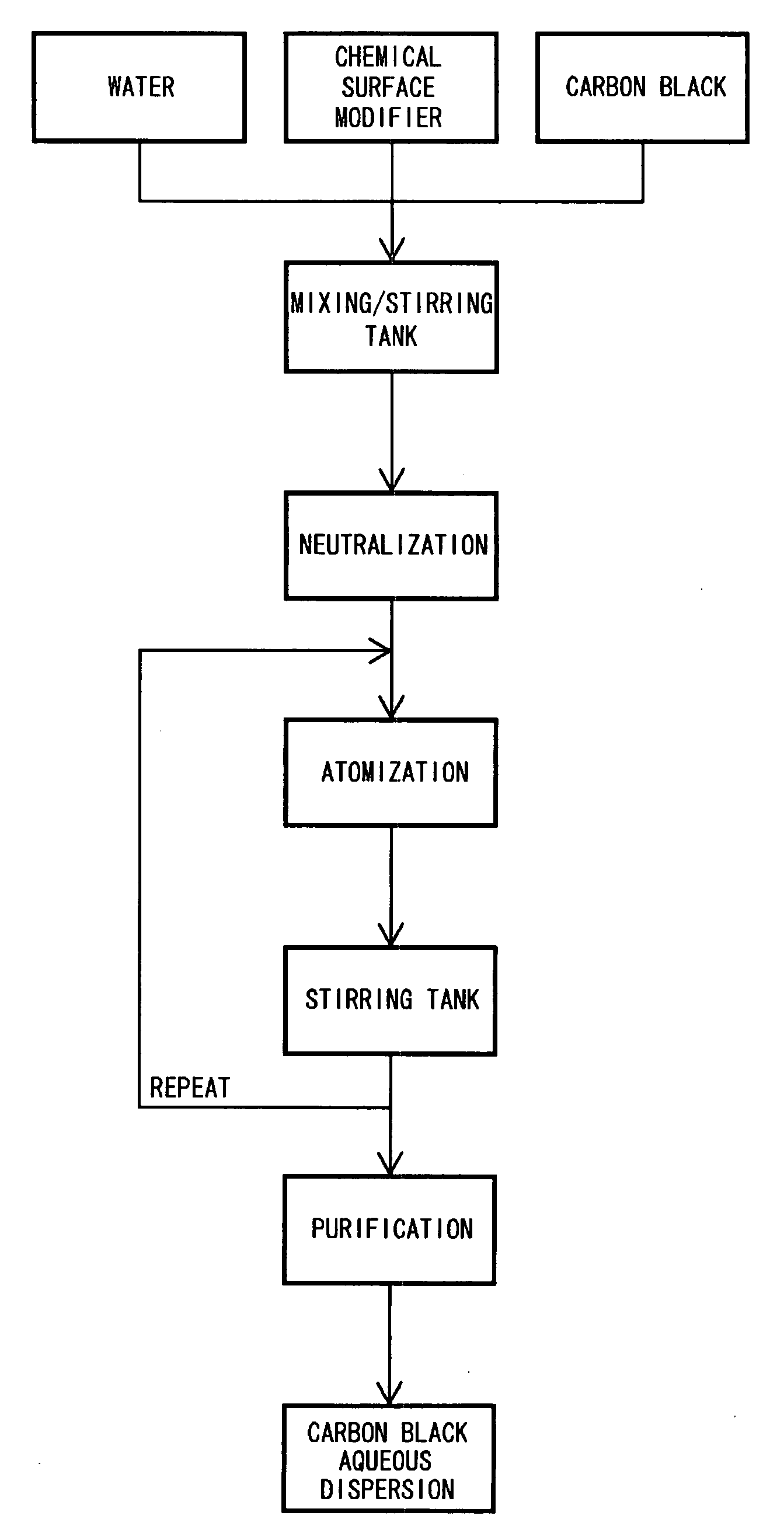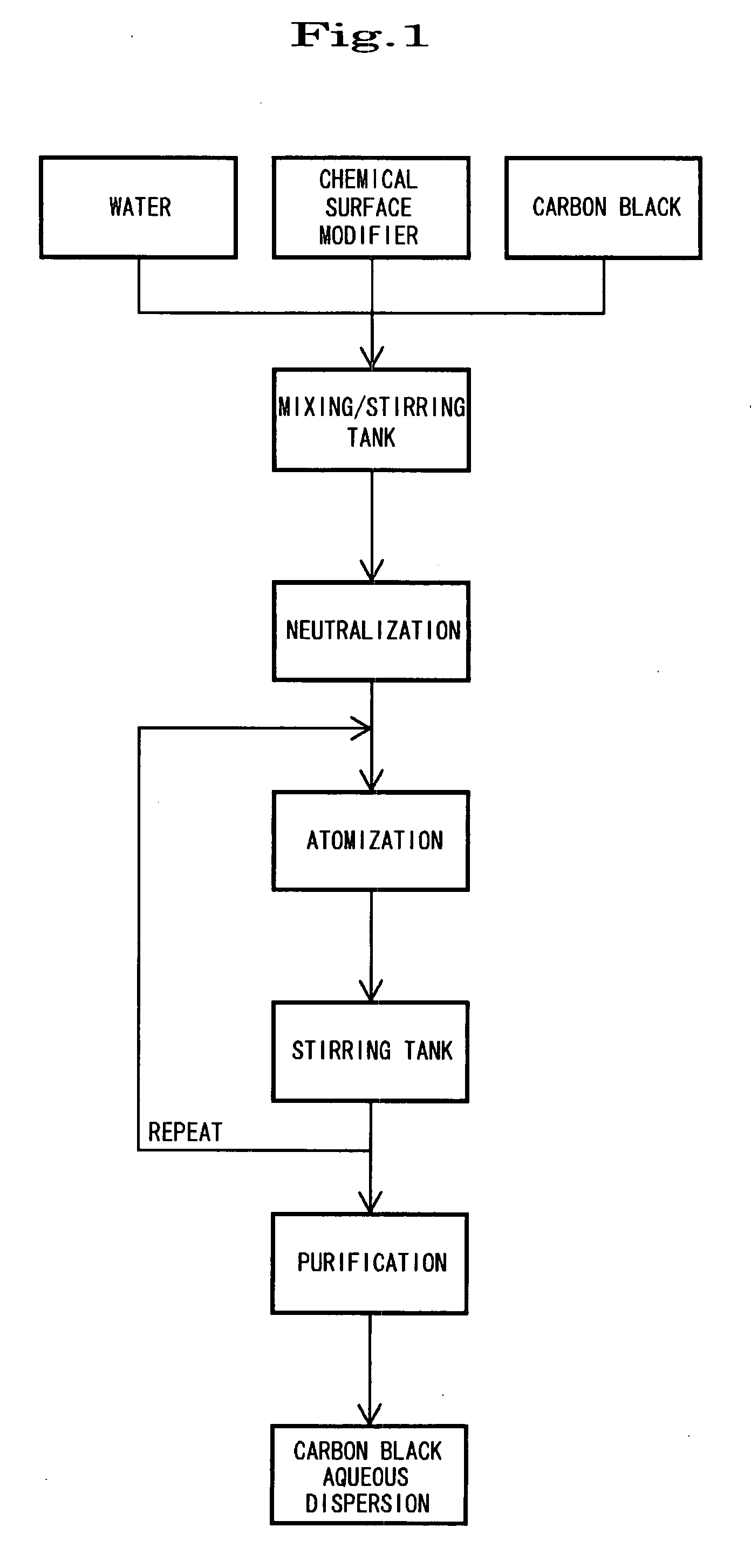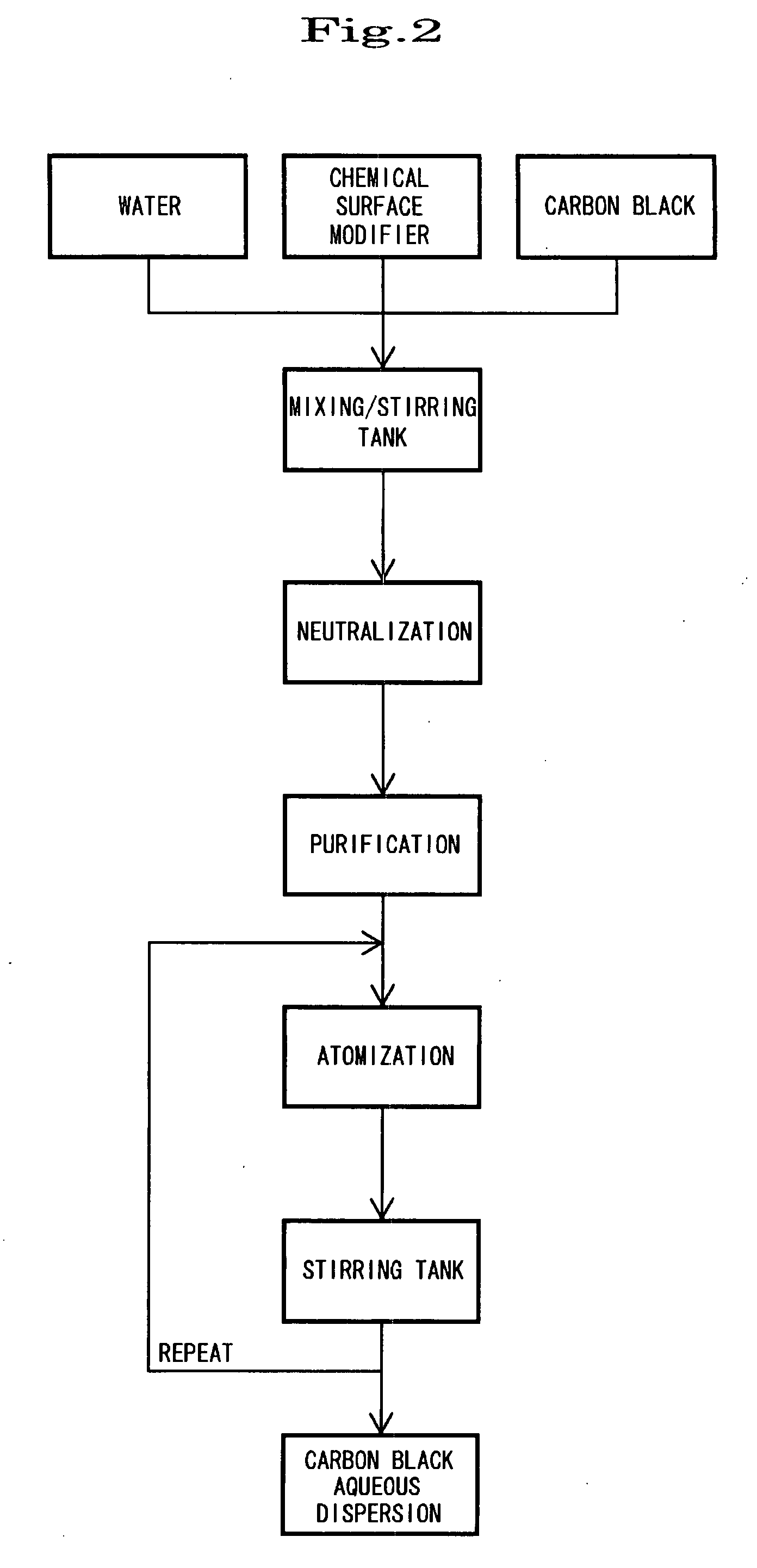Method of producing carbon black aqueous dispersion
- Summary
- Abstract
- Description
- Claims
- Application Information
AI Technical Summary
Benefits of technology
Problems solved by technology
Method used
Image
Examples
example 1
[0042]A mixing / stirring tank was charged with Seast 9 (manufactured by Tokai Carbon Co., Ltd.) as carbon black, sodium peroxodisulfate as a chemical surface modifier, and deionized water in the amounts stated below. The mixture was stirred and mixed at 60° C. for 10 hours at a stirring speed of 300 rpm to obtain a slurry and chemically modify the carbon black.
Carbon black: 150 g
Sodium peroxodisulfate deionized water solution (concentration: 2.0 N): 3000 ml
[0043]After the reaction, the carbon black was filtered, neutralized with sodium hydroxide, and continuously stirred in the mixing / stirring tank to stabilize the neutralization reaction. Salts were removed from the slurry and the slurry was concentrated using an ultrafiltration membrane (AHV-1010 manufactured by Asahi Kasei Corporation). The slurry was thus purified to have a carbon black concentration of 20 wt % and an electrical conductivity of 1.02 mS / cm.
[0044]The slurry was supplied to an Ultimizer (manufactured by Sugino Machi...
example 2
[0045]In the same manner as in Example 1, a slurry obtained by chemically modifying and neutralizing carbon black (Seast 9) was repeatedly supplied to the Ultimizer 10 times to be sprayed and atomized under a pressure of 245 MPa. Salts were then removed from the slurry and the slurry was concentrated using an ultrafiltration membrane (AHV-1010 manufactured by Asahi Kasei Corporation). The slurry was thus purified to have a carbon black concentration of 20 wt % and an electrical conductivity of 1.21 mS / cm. Thus, a carbon black dispersion was produced.
PUM
 Login to View More
Login to View More Abstract
Description
Claims
Application Information
 Login to View More
Login to View More - R&D
- Intellectual Property
- Life Sciences
- Materials
- Tech Scout
- Unparalleled Data Quality
- Higher Quality Content
- 60% Fewer Hallucinations
Browse by: Latest US Patents, China's latest patents, Technical Efficacy Thesaurus, Application Domain, Technology Topic, Popular Technical Reports.
© 2025 PatSnap. All rights reserved.Legal|Privacy policy|Modern Slavery Act Transparency Statement|Sitemap|About US| Contact US: help@patsnap.com



